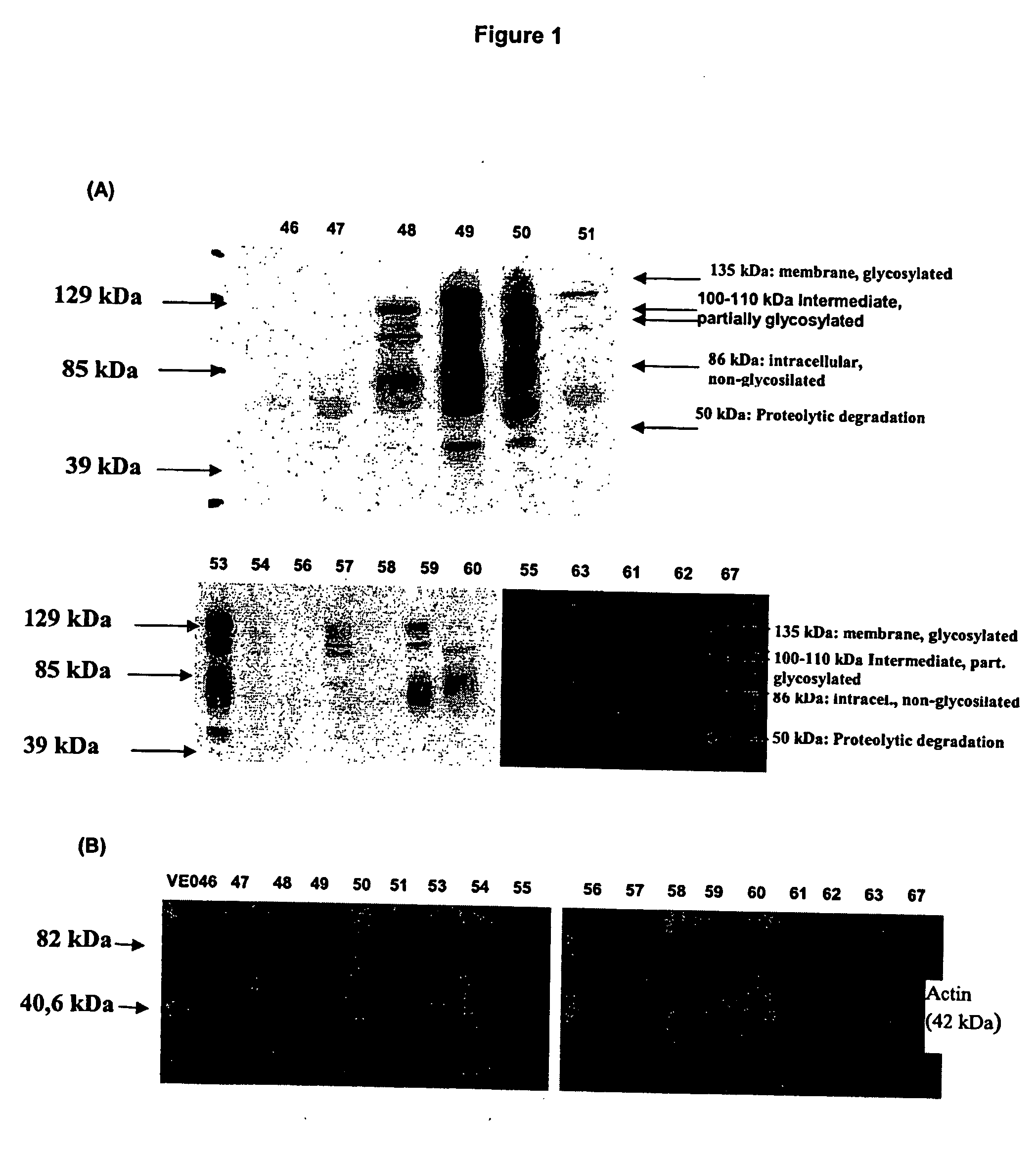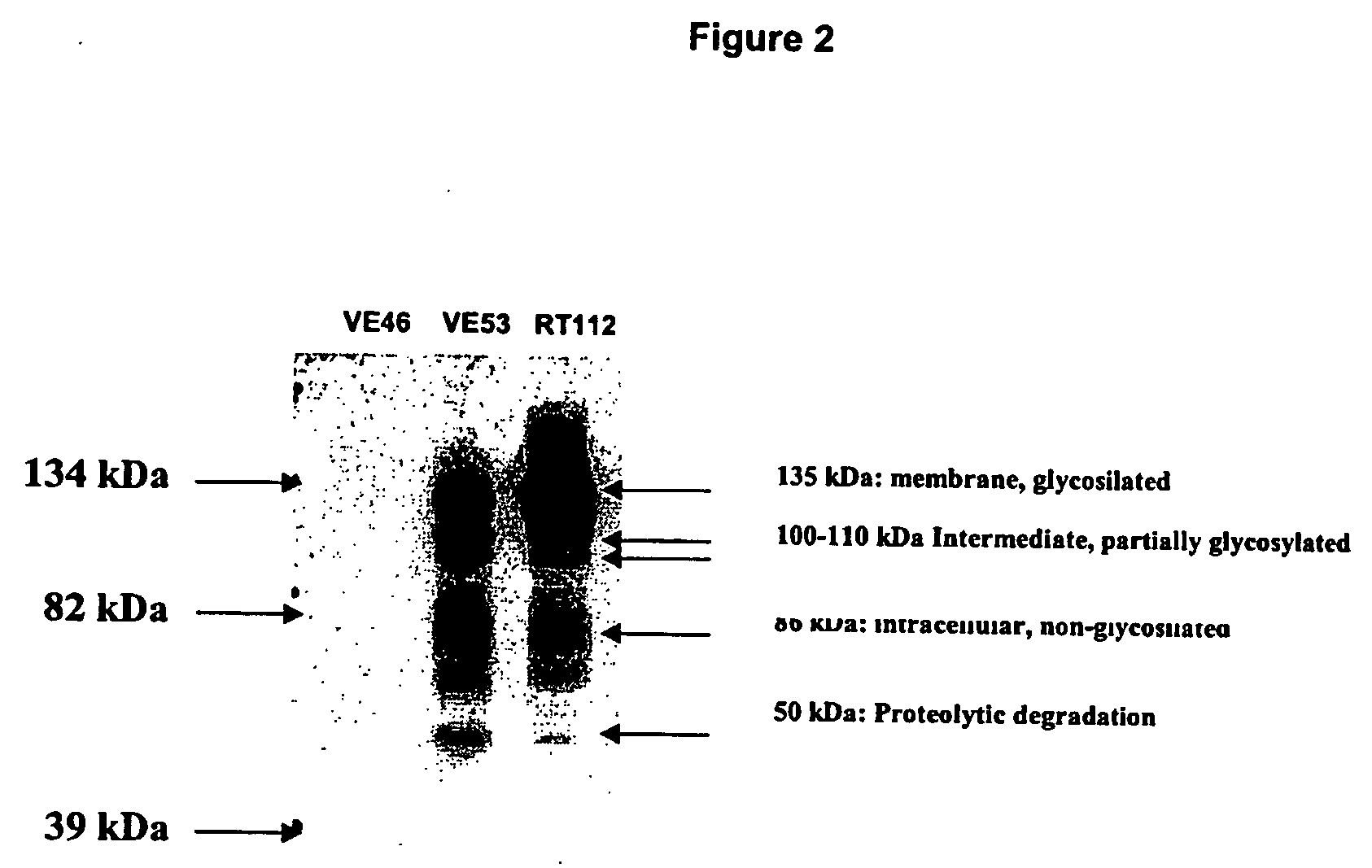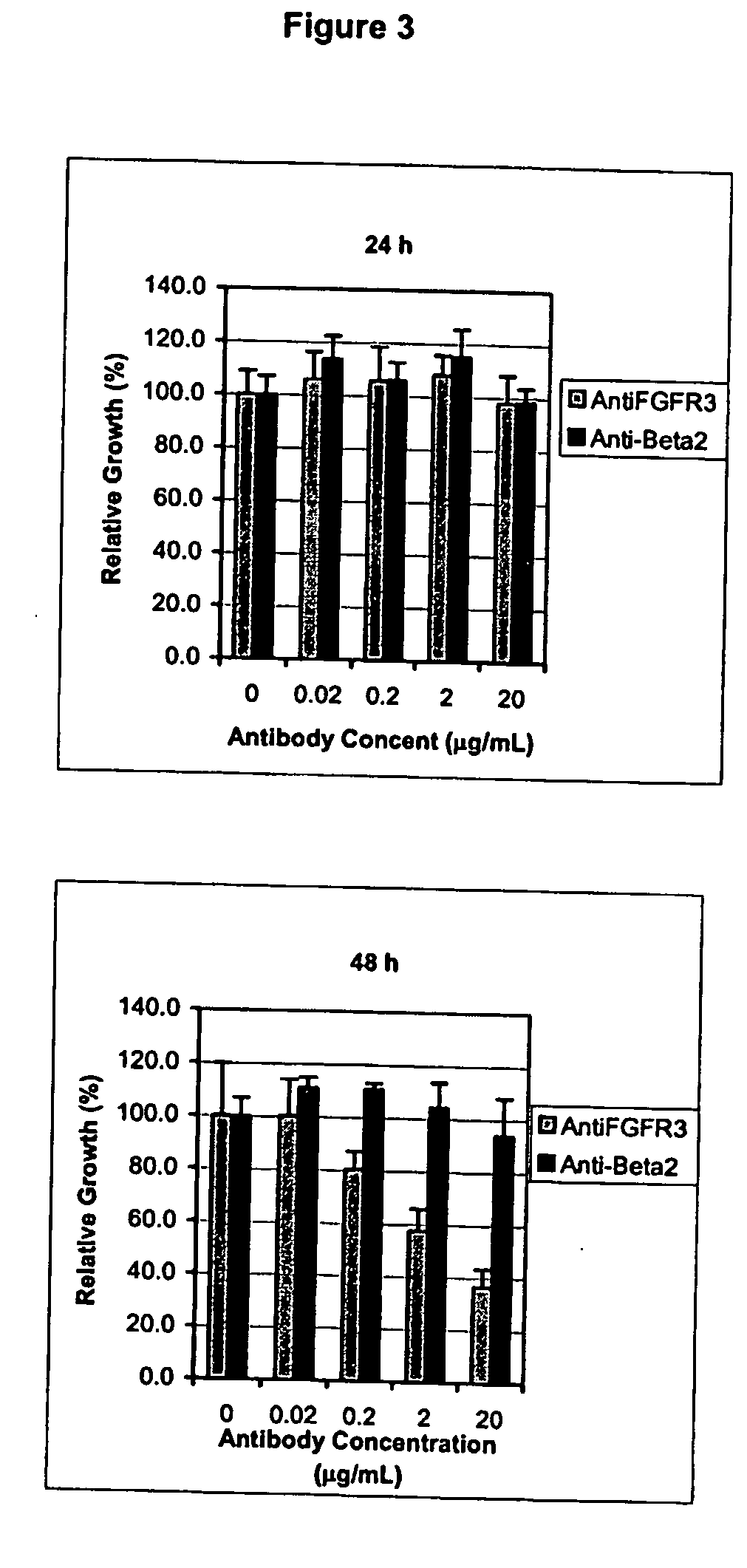In vitro method to detect bladder transitional cell carcinoma
a transitional cell carcinoma and in vitro method technology, applied in the field of in vitro method to detect bladder transitional cell carcinoma, can solve the problems of poor prognosis of patients with invasive tcc, high labor intensity, and high labor intensity
- Summary
- Abstract
- Description
- Claims
- Application Information
AI Technical Summary
Benefits of technology
Problems solved by technology
Method used
Image
Examples
example 1
Differential Analysis of the Expression of the FGFR3 Gene in Samples of Bladder Tissue, Using Human Genome U95 DNA Arrays
1.1. Materials and Methods
[0086] Microarrays. GeneChip Test 3 (Affymetrix, Santa Clara) microarrays were used, that permit the quality of RNA to be tested before analysing expression with the GeneChip Human Genome U95A array (Affymetrix, Santa Clara), which represents 12,000 complete sequences of annotated genes; the FGFR3 gene is represented in the microarray by the set of probes 31805_at of Affymetrix, which are sense oligonucleotides 25 nucleotides long, designed on the basis of the Hs.1420 sequence of Unigene, or N. Acc. M64347 of GeneBank (Table 1).
TABLE 1Description of the probes correspondingto the set of probes 31805_at.ProbeConsecutiveRegion of thepositionorder ofinterrogatedProbein mRNAprobesreference sequencesequence (5′-3′)sequence13511SEQ ID NO: 3322723625SEQ ID NO: 4334033633SEQ ID NO: 5334843663SEQ ID NO: 6337853684SEQ ID NO: 7339963716SEQ ID N...
example 2
Differential Analysis of Expression of the FGFR3 Protein in Bladder Tissue Samples Using the Western Blot Technique with Specific Antibodies
2.1. Materials and Methods
[0113] Samples:
[0114] Samples were obtained form transurethral resection biopsies (TURB). In this part of the study we analysed three urinary bladder samples from healthy individuals (samples 46, 55 and 63), six low-grade superficial carcinomas (pTaG1) (samples 48, 49, 50, 53, 56 and 59), three high-grade lamina propria invasive carcinomas (pT1G3) (samples 57, 61 and 67) four high-grade muscle-invading carcinomas (pT2G3) (samples 47, 51, 58 and 60) and two samples of unknown grade (samples 54 and 62). The samples were from different patients than those used for the microarray analysis. Fresh tissue was immediately frozen in liquid nitrogen after extraction and stored at −80° C. until used for extraction of protein. All the samples used in this study were obtained by surgical transurethral resection performed in the ...
example 3
In Vitro Inhibition of Bladder Tumoral Cell Line Proliferation by Specific Antibodies Against the FGFR3 Protein
3.1. Materials and Methods
[0123] Culture Cell Lines:
[0124] The RT112 human bladder carcinoma epithelial cell line was obtained from the German Collection of Microorganisms and Cell Cultures (Braunschweig, RFA). RT-112 cells were grown in RPMI medium, supplemented with 10% foetal bovine serum (FBS) and 2 mM glutamine, except where otherwise stated. Tissue culture reagents were obtained from Invitrogen (Paisley, UK).
[0125] Preparation of Protein Lysates:
[0126] Cells from a 10 cm plate were washed twice with cold phosphate buffered saline (PBS), pH 7.4 and collected in 0,5 ml of RIPA B. Samples were centrifuged at 15000×g for 10 min at 4° C. to pellet cellular debris. The supernatant was kept and the protein concentration was measured using the Bradford protein assay (BioRad, Hercules, Calif., USA) (Molina, M. A. et al., Cancer Res., 1999, 59: 4356-4362).
[0127] Protein ...
PUM
| Property | Measurement | Unit |
|---|---|---|
| molecular weight | aaaaa | aaaaa |
| pH | aaaaa | aaaaa |
| constant rotation | aaaaa | aaaaa |
Abstract
Description
Claims
Application Information
 Login to View More
Login to View More - R&D
- Intellectual Property
- Life Sciences
- Materials
- Tech Scout
- Unparalleled Data Quality
- Higher Quality Content
- 60% Fewer Hallucinations
Browse by: Latest US Patents, China's latest patents, Technical Efficacy Thesaurus, Application Domain, Technology Topic, Popular Technical Reports.
© 2025 PatSnap. All rights reserved.Legal|Privacy policy|Modern Slavery Act Transparency Statement|Sitemap|About US| Contact US: help@patsnap.com



